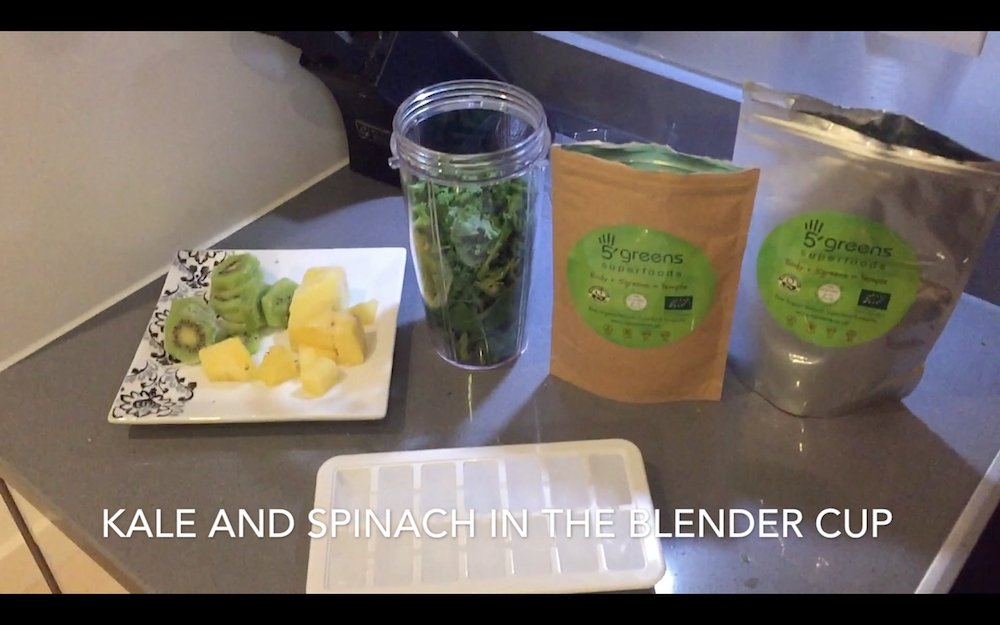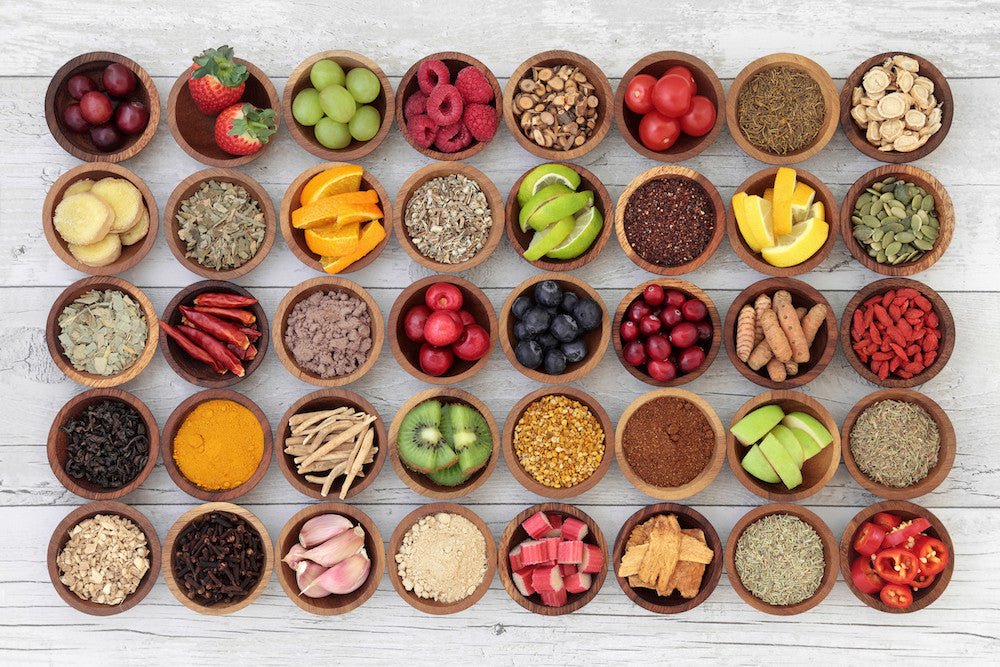What exactly are in your supplements ?
Posted on 26 May 2018
Have you ever had a look at of your supplements and found that there is a lot of additional ingredients listed then you expected ? Like me I would have expected the active ingredient I thought i was taken and thats it !
Clearly with modern supplements this is not the case. I discovered that my Milk Thistle capsules had Magnesium stearate , Titanium dioxide , Microcrystalline cellulose and then the Milk Thistle. This situation was not just unique to me as i discovered looking through the ingredients of commonly available supplements.
With 5greens all our products are free of all fillers and binders.
Have you ever wondered what they are and why they are used?
Excipients and fillers are added to pharmaceuticals (drugs) and (supplements) to help with the manufacturing and stabilization of these products. They are the “glue” which bind and stabilize a supplement. Historically they have been considered inert and without any medicinal benefit or influence. This assumption has allowed their use to be wide-spread with little regard for their actual influence. Excipients, for example have been found to initiate or participate in chemical and physical interactions which can compromise the efficacy of a medication or supplement. Excipients and fillers can influence the efficacy and quality of supplement and drugs and are best avoided when choosing supplements.
With 5greens all our products are free of all fillers and binders.
This is what is in your Supplements !
Excipients - aid in the manufacturing process to help stabilize products so they can be taken in various dosage forms. Often, the active component of a drug or vitamin cannot be manufactured and put into a tablet or capsule form without a stabilizing agent to help keep it active. There are several different types of excipients and fillers used in the production of supplements.
- Anti-adherents -are the most common anti-adherent used in manufacturing is magnesium stearate. It is used to prevent product from sticking or adhering to machines in the manufacturing plant, thereby decreasing waste and increasing profitability for companies.
- Binders are used to hold ingredients together. They also give weight and allow small active ingredients to be combined into an easy to take capsule or tablet. Binders are typically a sugar derivative and include: lactose, sucrose, microcrystalline cellulose, malitol, sorbitol, xylitol etc.
- Coatings are added to tablets to help make large, difficult to swallow pills easier to take. They also prevent deterioration from water and moisture. Coatings can also allow for breakdown in a specific organ in the body. For example enteric coatings allows for breakdown in the small intestine, preventing breakdown in the acidic environment of the stomach. Examples include: hydroxypropylmethocellulose (HPMC).
- Disintegrants allows for breakdown of a capsule or tablet when wet. This ensures rapid breakdown to facilitate rapid absorption of a product. Examples include: sodium starch glycosylate.
- Fillers and diluents add bulk to products making very small active components easy for consumer to take. Examples include: lactose, sucrose, magnesium stearate, glucose, plant cellulose, calcium carbonate etc.
- Lubricants prevent the clumping of active ingredients and prevent the sticking of materials to machines in the manufacturing plant. Examples include: silica, talc, stearic acid, magnesium stearate etc.
- Preservatives are used to extend the shelf-life of products and prevent degradation, oxidation, bacterial growth etc. Examples include: vitamin A, C, E, selenium, amino acids, methyl paraben, propyl paraben
- Colours are commonly added to pharmaceutical products to help identify drugs. This is of particular concern for individuals on multiple pharmaceutical agents to avoid unnecessary overdose. The most common food colouring additives are:
- FD&C Blue No. 1 (brilliant blue FCF)
- FD&C Blue No. 2 (indigotine)
- FD&C Green No. 3 (fast green FCF)
- FD&C Red No. 40 (allura red AC)
- FD&C Red No. 3 (erythrosine)
- FD&C Yellow No. 5 (tartrazine)
- FD&C Yellow No. 6 (sunset yellow)
- Artificial flavours are artificial flavouring agents added to various pharmaceutical and nutraceutical products to help make certain powdered or liquid medications more palatable. They are labelled as artificial flavours on product labels. There are over 2000 chemical used to make a wide range of flavours.
With 5greens all our products are free of all fillers and binders.
Are these fillers and Binders Safe ?
Magnesium stearate: Is a widely used excipient in Supplement and pharmaceutical products. Some studies have shown that it suppresses immune function. The absorbability of products is also questionable when magnesium stearate has been added to a formula. As a powerful binder of active constituents the rate of dissolution of a substance is altered, yet studies have shown that bioavailability remains the same. Some manufacturers believe that this is true and will only use magnesium stearate in the formulas as filler and never as coating due to the question of dissolution. Magnesium stearate is naturally produced when soap and hard water mix creating the unwanted “soap scum” ring around bathtubs.
Titanium dioxide: Is a common whitening agent used in some supplements and pharmaceutical agents. It has shown to be a potential carcinogen to humans. Rats studies have shown that inhalation of ultrafine titanium dioxide can cause respiratory tract cancer.
Parabens: Are a group of widely used preservative and anti-microbial agent in personal care products and supplements. There is growing concern that parabens can cause hormone disruptions and they have been found in high concentrations in breast cancer tumours. Parabens can be found in supplements as methylparabens, ethylparaben, propylparaben, butylparaben. Choose supplements that avoid this potentially harmful substance.
Lactose: A sugar found in milk can cause severe gastro-intestinal upset in individuals sensitive to milk products. In none sensitive individual’s lactose is generally not a great concern.
Maldodextrin: Is a polysaccharide that is rapidly converted to glucose in the blood stream. Maltodextrin can come from a variety of startch products. Wheat and corn are the most common. Although not generally a concern in supplements, the source of maltodextrin should be noted. If from a wheat source, gluten will be removed, but should still be avoided in individuals with celiac disease to avoid any potential adverse reaction.
MSG: or Monosodium glutamate is a common flavouring agent in supplements. It is a known neurotoxic agent and should be strictly avoided when choosing supplements. It has also been shown to cross the placenta and induce neuronal damage in developing mice.[7]MSG is a food additive used to enhance the flavour of food. Reactions to MSG may occur and may include: tingling and weakness around the face, temple, upper back, neck, and arms, with flushing of the skin and warmth. Some people experience heart palpitations, intense thirst, anxiety, nausea, and vomiting.
Talc: Is a known carcinogenic. Studies have shown that it increases the risk of endometrial cancer in peri-menopausal women when used topically in the peri-anal area. Inhalant or intravenous talc exposure increases the risk of pulmonary toxicity. Intravenous talc can lead to various degrees of granulomatous formation, compromised pulmonary function or death. The use of talc should be strictly avoided in supplements, oral, inhaled and topical.
Microcrystalline cellulose: Is a bulking agent used in supplements to fill capsules when the medicinal agents are too small. It is ideal filler as it is naturally occurring and derived primarily from wood pulp. It is glucose units bound together by a beta 1-4 linkage which creates cellulose a fibre indigestible to humans. It enters and leaves the digestive tract unchanged and is chemically inert.
Gelatin: Is derived from collagen in animal’s skin and bones. It is a gelling agent used in supplements to help coat the outside of capsules to make them easier to swallow. Gelatin is commonly found in various desserts and gummy candies. A vegan alternative to a gelatin capsule is hypromellose.
Gellan gum: Is commonly used as a food additive, it is used in most soy drinks to help keep soy products in suspension. It is used as a thickener and stabilizer in supplements. A study examined the dietary effects of large quantities of gellan gum and found that it seemed to affect transit time by either increasing or decreasing time in a few subjects. Serum cholesterol levels were decreased by an average of 12% in males and 13% in females. No adverse physiological effects were seen in the subjects.
Tartrazine: A yellow colouring agent used in some supplements and pharmaceuticals has been shown to cause adverse reactions in certain individuals. It is well known to cause asthma and urticaria in sensitive individuals and has been shown to cause behavioral changes such as irritability, restlessness, and sleep disturbance in children. The use of any food colouring additive should be strictly avoided when choosing supplements.
Allura Red: A red colouring agent used as a food additive has been linked to both behavioural and physical toxicity. When fed to rats in animal studies, rats displayed significantly reduced reproductive success, weight, brain weight, survival and impaired female vaginal patency development. Behaviourally, the rats had significantly decreased running wheel activity when compared to control.
Indigotine: A blue food colouring agent has been linked to asthma in one study. A case report outlined increased cough, dyspnea, wheezing and nasal congestion in a subject immediately following exposure to indigotine at work.
Brilliant Blue FCF and Indigotine: Two blue food colouring agents have been linked to various adverse effects. Animal studies looked at the adverse effects of brilliant blue and indigotine given to rats over a two year span. The study found that growth inhibition occurred in the male animals fed indigotine and subcutaneous injections of 30 mg of brilliant blue or 20 mg of indigotine into rats weekly for two years produced fibrosarcomas at the site of injection.
Combination of all food colourings: Was tested to determine if adverse effects exist. A study looked at a combination of several food colouring additives and a common preservative, sodium benzoate. This studied tested children aged 3 and 8-9 to determine if food colouring additives can increase hyperactivity in children. The study found that food colouring additives or sodium benzoate (or both) increased hyperactive in both age groups studied. The use of food colouring should be avoided in pharmaceutical and nutraceutical products.
Artificial Flavours: Dr. Ben Feingold an allergist proposed 30 years ago that artificial flavours, colors and salicylates can be the cause of hyperactivity in children. A diet free of artificial colors, flavours and salicylates reduced hyperactivity symptoms and behavioural disturbances in 30 to 50% of children.



Connect With 5Greens